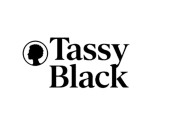To operate a beauty salon, it is not only about getting fancy hair cuts, shiny skin treatments or spas, but it is also about keeping bookkeeping, costs, and profits in check as well as making sure that your profit margins are in line with your business development. Accounting for beauty salon operations is often overlooked by many owners, yet it plays a crucial role in determining financial health and long-term sustainability.
The highlight of the beauty industry behind the gloss and glamour of beauty services is a mushroom of daily expenses, money flow, and unknown costs that may rapidly eat away your profits. Effective beauty salon accounting practices may help you to discover these hidden costs, make right business decisions and increase profitability.
This step-by-step guide will discuss how the accounting of a salon helps you see the hidden expenses of the day-to-day running, the significance of financial management, and tips that can help you keep your beauty salon afloat.
1. The Importance of Accounting for Beauty Salon Businesses
The goal of every beauty salon owner is to build their brand, increase their clientele, and have a following. Nevertheless, such objectives are possible to be attained in case of your having a solid financial background. The accounting for beauty salon is not simply about the income and or expenses, it’s all about knowing where your money is getting into and where it is going.
A properly managed accounting system gives:
- View of your day to day sales and costs.
- Better decisions through the use of accurate profit and loss statements.
- Better budgeting and forecasting.
- Adherence to taxation and payroll laws.
Once your financial records are properly organised, growth planning is easier, you invest wiser, and seasonal changes that are common in the beauty business is easy to manage.
2. Understanding Hidden Daily Costs in Beauty Salons
Most of the salon proprietors are preoccupied with the apparent costs such as product prices, employee salaries, and rent. Nevertheless, these are some of the disguised daily expenses that can silently erode profits without the prope of the beauty salon accounting.
Also Read : Premanand Ji Maharaj Biography: Spiritual Journey of Devotion & Service
a. Product Wastage
Whenever a stylist applies too much of your hair color or a spa therapist dispenses more cream than she requires, your salon is losing money. These minor wastages will add up with time in the form of a large hidden expense.
b. Unrecorded Complimentary Services
Giving free touch-ups or extra services to regular customers may appear to be innocent, but when they are not registered in your accounting software, you are unable to see the actual inventory consumption and labor expenses.
c. Utility Expenses
The consumption of electricity, water and air conditioning in a beauty salon is very high compared to that in small businesses. These utilities costs are subject to changes on a daily basis and have to be closely overseen on salon financial management.
d. Commission and Payroll Leaks
Such problems as commission tracking and human errors with payrolls can result in a huge difference of financial statements. Online salon accounting software will be able to avoid deductions or overpayment.
e. Unused or Expired Products
There is a shelf life of beauty products and cosmetics. The non-rotated and non-tracked stock only increases the cost of your beauty salon expense.
f. Appointment Cancellations and No-Shows
These influence the daily revenue directly. Cancellation policy and monitoring of such occurrences in the account of beauty salons contribute to consistency in the income tracking.
3. Components of Effective Beauty Salon Accounting
In order to have a real picture of the financial position of your salon, you must develop an appropriate accounting for the beauty salon system which will be able to trace the income, expenses, and cash flow in a smooth stream.
a. Income Tracking
These are service fees, sale of retail products, membership fees, and gift cards. Income sources are classified in such a way that it enables one to know the most profitable services.
b. Expense Management
Separate all the beauty salon expenses like rent, salon staff wages, purchasing products, utility bills and advertising expenses. This not only gives in the understanding but also assists in claiming the tax deductions.
c. Inventory Management
Keep a record of product usage and levels of reorders using accounting software. Connecting your inventory to your POS system will make all the sales automatically update your stock.
d. Payroll and Commissions
Another huge percentage of salon accounting is commonly employee payments. Effective management of commissions, bonuses and overtime will be accurate and just.
e. Financial Reporting
Salon financial management requires regular financial statements, which include balance sheets, cash flow statements and profit and losses statements. These reports show the trends and where you can make cost savings.
4. How Accounting Software Helps Beauty Salons
The current beauty salon’s accounting has developed beyond the manual bookkeeping to computerized cloud systems. Accounting software is able to simplify the data management process, automate repetitive processes, and make financial insights easily available in real-time.
Key Benefits:
- Automated Expense Tracking– All expenses are automatically registered in real time by integrating them with POS.
- Real-Time Profit Analysis– Find out what services are bringing in the most profit.
- Payroll Integration – Automate calculation of salary, commissions and deductions of staff.
- Tax Compliance – Prepare the right tax reports and evade fines.
- Cloud Access– Access your financial information any time and place.
The most commonly used salon accounting software are QuickBooks and Xero, as well as salon-specific software such as Phorest, Fresha, or Salon Iris, which are a combination of an appointment management system and accounting software.
5. Strategies to Reduce Beauty Salon Expenses
It is not enough to determine the hidden costs. The second one is managing and reducing them by clever financial management plans in the salon.
a. Audit Your Inventory Regularly
Monitor each product throughout purchase to use. Establish low reorder points and educate employees to reduce wastages.
b. Implement Digital Scheduling
Automated reminders and cancellation policies will reduce no-shows. Connect your booking system to your accounting software to get the right records of revenue on a daily basis.
c. Review Supplier Contracts
Bargain with suppliers or use bulk buying on products that have long shelf life.
d. Monitor Energy Usage
Easy measures such as the replacement of lights with LED or the use of efficient heating and ventilation systems can save utility expenses in the long term.
e. Analyze Service Profitability
Determine poor performing services using your beauty salon accounting reports. Substitute them with more lucrative alternatives that reflect the demand of the customers.
f. Manage Employee Performance and Pay
Develop open commission plans that are based on sales results as a way of inspiring your employees and enhancing their productivity.
6. The Role of a Professional Accountant in Salon Management
Whereas others do the bookkeeping of a beauty salon themselves, it can be cost-efficient to employ a person who has the experience of accounting of beauty salon. A professional accountant is able to:
- Assistance in filing taxes and GST.
- Determine places to cut on costs.
- Develop a long term financial plan.
- Make monthly financial statements.
- Install a working system of salon accounting.
Unless you can afford to pay full-time accountant, then you can choose to outsource your accounting services to a professional company that is used to working in the beauty and wellness sector.
Also Read : How Technology Is Shaping the Future of Online Learning
7. Common Mistakes in Salon Accounting and How to Avoid Them
A lot of salons are financially challenged not due to low sales, but as a result of bad accounting habits. The following are some of the pitfalls to look out:
a. Mixing Personal and Business Finances
The accounting of a beauty salon must be clean and accurate, so it will be necessary to keep business transactions separate.
b. Ignoring Small Expenses
Such spending as refreshments or cleaning supplies might appear minor money usage, but they cause money leakage easily.
c. Lack of Cash Flow Monitoring
Liquidity problems could be encountered even in a seemingly profitable business unless it is tracked regularly.
d. No Regular Financial Review
Going through financial reports at the month end will enable to track trends and compare progress and make corrections in time.
e. Avoiding Technology
Human error is likely to occur in manual systems. Adoption of digital salon accounting tools makes it more efficient and precise.
8. Enhancing Profitability Through Financial Management
Not only will it record the transactions, but proper salon financial management will give actionable insights to improve the profits.
Here is the way to get more profit:
- Monitor service: related margins: Understand what treatments make the most money.
- Sell products as upsell: Promotion of complimentary beauty products to clients.
- Provide repeat programs: Increase the number of return visits as well as be able to predict revenue flows.
- Slow season budget: Plan the months when the number of customers is low.
- Invest in training: High quality personnel will perform higher, increasing customer satisfaction and retention.
These strategies together with sound accounting of the beauty salon business will guarantee the sustainability of the business in the long term.
9. Real-Life Example: How Accounting Helped a Salon Uncover Hidden Costs
Take the case of a small salon operator who thought that her business was performing well due to the inflow of clients. But once she introduced accounting of beauty salon, she found out that close to 20 percent of her monthly sales were wasted with unrecorded free services, excessive use of supplies, and poor payroll management.
She completed this by strengthening inventory management, reformulating commissioning structure, and making use of accounting software to track the daily expenses and the profits grew 30% in six months. It is a practical example of how the accounting of beauty salons can unveil the hidden financial leakage and transform your business.
10. Building a Financially Healthy Beauty Salon
Beauty salon is a business that needs creativity and financial discipline. Proper accounting of your salon, intelligent budgeting, and positive salon financial management will keep you ahead in the competitive world.
Procedures to stay financially healthy:
- Look at financial reports on a monthly basis.
- Evaluate cost patterns and deal with abnormal highs.
- Automate payroll and expense tracking.
- Have a cash fund in the case of emergency.
- Enroll in accounting and finance classes on a regular basis.
These practices will see your salon growing in profits and sustainably without the need to strain the wallet.
Conclusion
Creativity is the key to any success of the beauty industry; however, just behind the successful salon, there is an accurate financial control. The responsibility of the Accounting for beauty salon operations is not only on the bookkeeping level, but also on the strategic level, which helps to reveal the realm of invisible costs, cash flow optimization, and make your business profitable.
Allowing you to fully control your business performance is by learning the beauty salon accounting, beauty salon expenses, and enhancing your salon financial management. Your small boutique salon or a huge chain, proper salon accounting can assist you make sound decisions, minimize unnecessary expenses and guarantee financial prosperity in the long run.
















